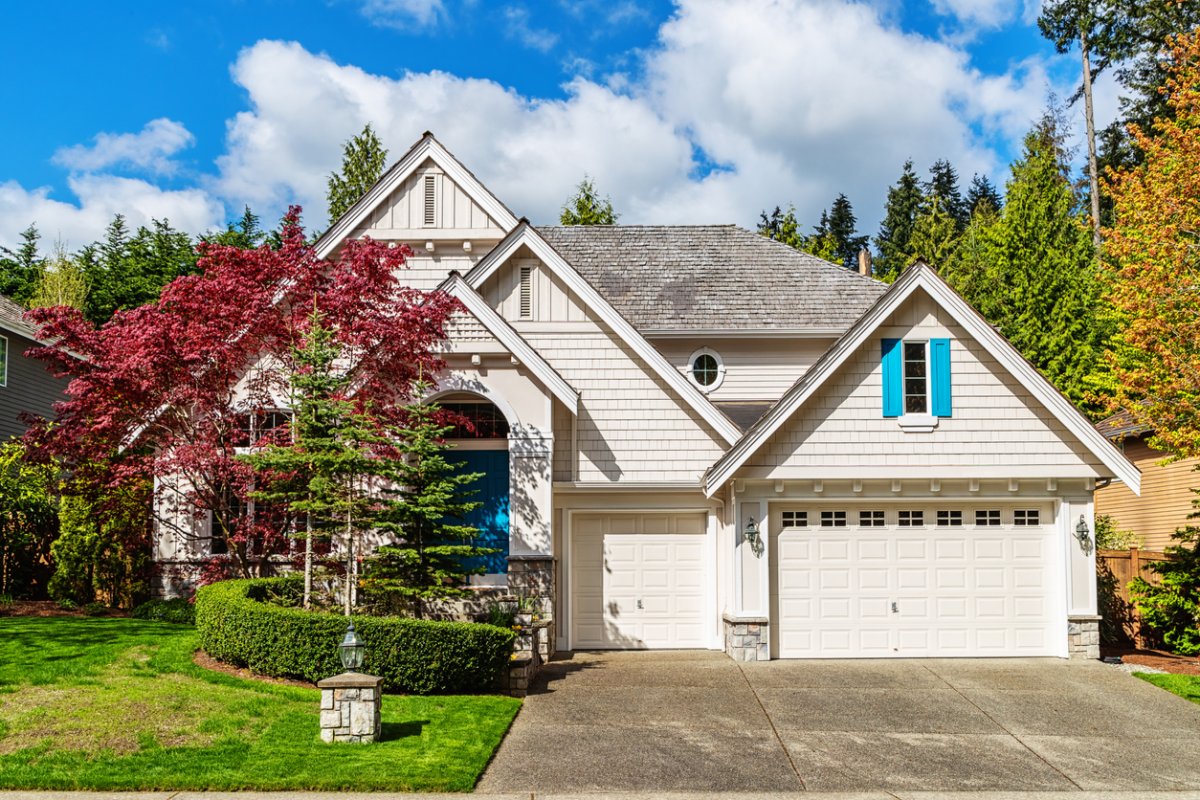We may earn revenue from the products available on this page and participate in affiliate programs. Learn More ›
Trees form the architecture of residential landscapes, adding beauty along with several practical benefits. The best trees for the front yard increase property value by as much as 15 percent. They can help reduce utility bills by providing shade in the summer and screening from cold winds during the winter months. They also can help buffer noise to make the yard and home quieter as well as provide privacy.
Trees help fight climate change by absorbing carbon dioxide and providing oxygen. They stabilize the soil and help lessen water runoff to minimize soil erosion, reduce flooding, recharge aquifers, and maintain water vapor in the atmosphere. Because trees attract birds and other wildlife, they help create a healthy habitat. The following are some ideas for trees in the front yard.
RELATED: The Dos and Don’ts of Landscaping Around Trees
1. Flowering Dogwood (Cornus florida)
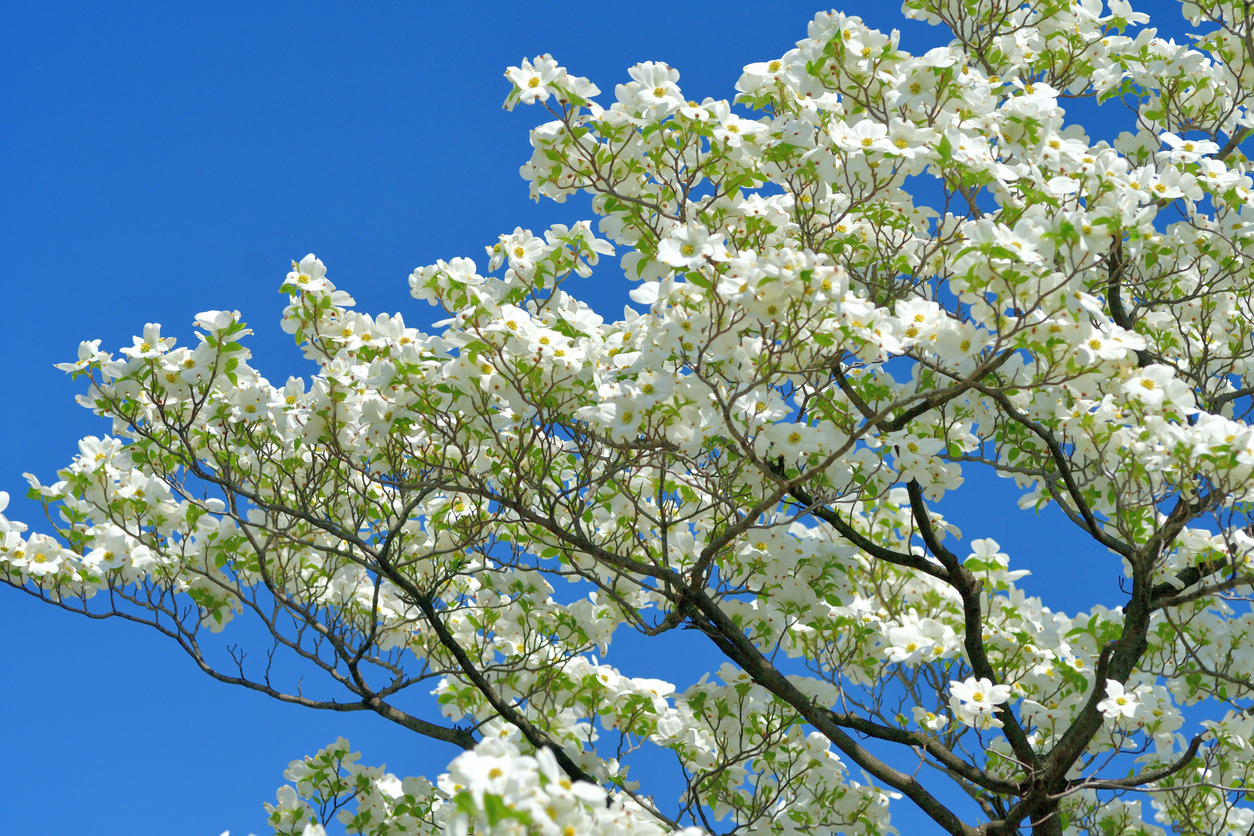
It’s no wonder the dogwood is one of the most popular ornamental trees for the front yard. In USDA zones 3 to 8, it offers four-season interest, with spring blooms in white, pink, or red; a compact canopy in the summer; red fall foliage; and winter berries that attract birds. Typical height at maturity is around 15 feet, although flowering dogwoods can reach up to 30 feet. Flowering dogwood is a fast-growing tree that prefers full sun to partial shade. Dwarf varieties, such as kousa dogwood, are also available.
Best For: Wide-open spaces where they can spread and attract pollinators.
2. Paper Birch (Betula papyrifera)
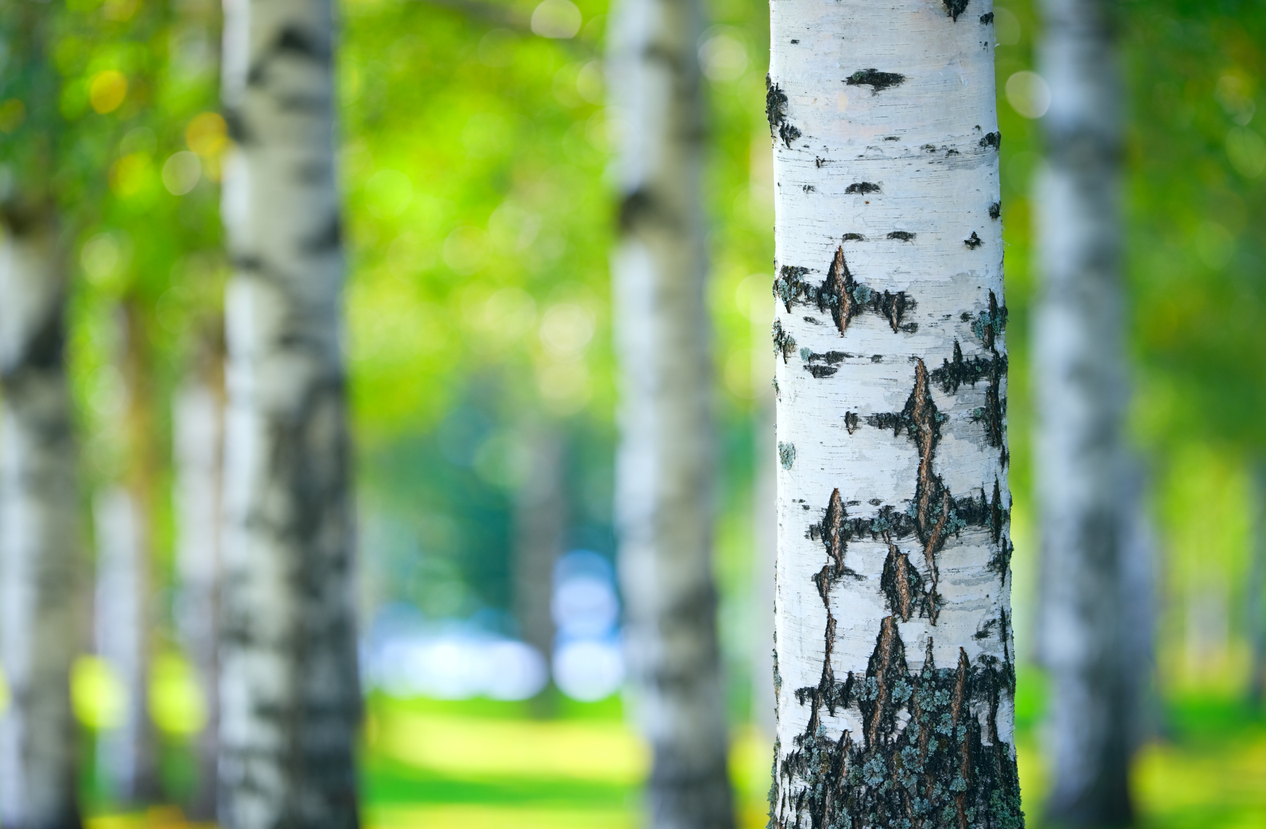
This fast-growing tree is typically grown in clumps of multiple trunks that can reach up to 70 feet tall. Prized for its dramatic peeling white bark, this native North American tree doesn’t tolerate drought, so it prefers partial shade and moist or evenly marshy soil. It grows best in zones 2 to 7. The cold-hardy birch is a lean tree, adding height over width to provide a dappled canopy. Yellow autumn leaves are as attractive against the white bark as the summer’s greenery.
Best For: Areas with moist soil or near water.
3. Sugar Maple (Acer saccharum)
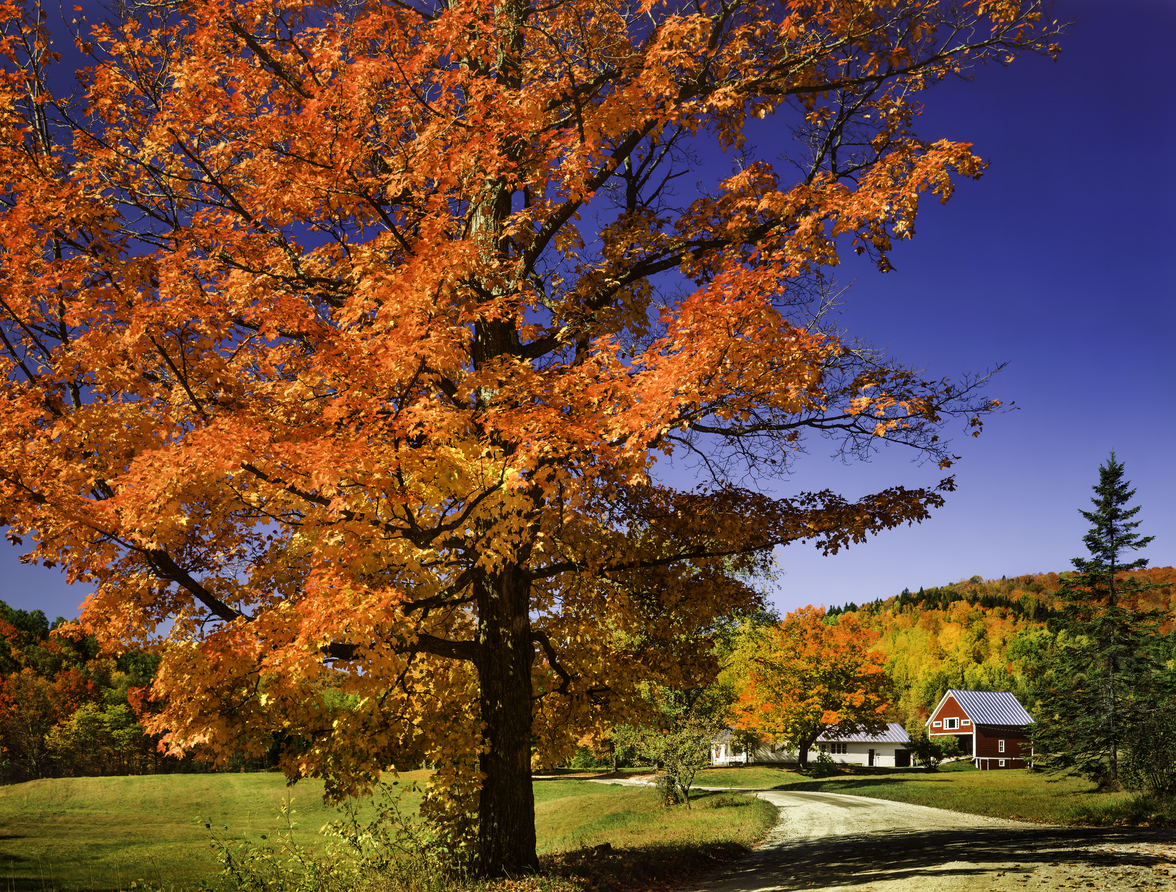
Native to areas of the Eastern U.S., the sugar maple is a tall and stately tree, reaching up to 75 feet high, with a wide, spreading canopy that provides ample shade. Famous for producing syrup, the maple tree is a beloved autumn star, with blazing yellow, orange, scarlet, and red foliage, which are features of good trees for the front yard. Home to insects, birds, and small mammals, the maple needs room to grow. This combination shade and ornamental tree lives a long time if it receives the necessary moist, well-draining soil. This maple prefers clean, country air in zones 3 through 8 and can tolerate shade.
Best For: Suburban or rural lots with room to spread, but away from septic tanks.
4. Colorado Blue Spruce (Picea pungens)
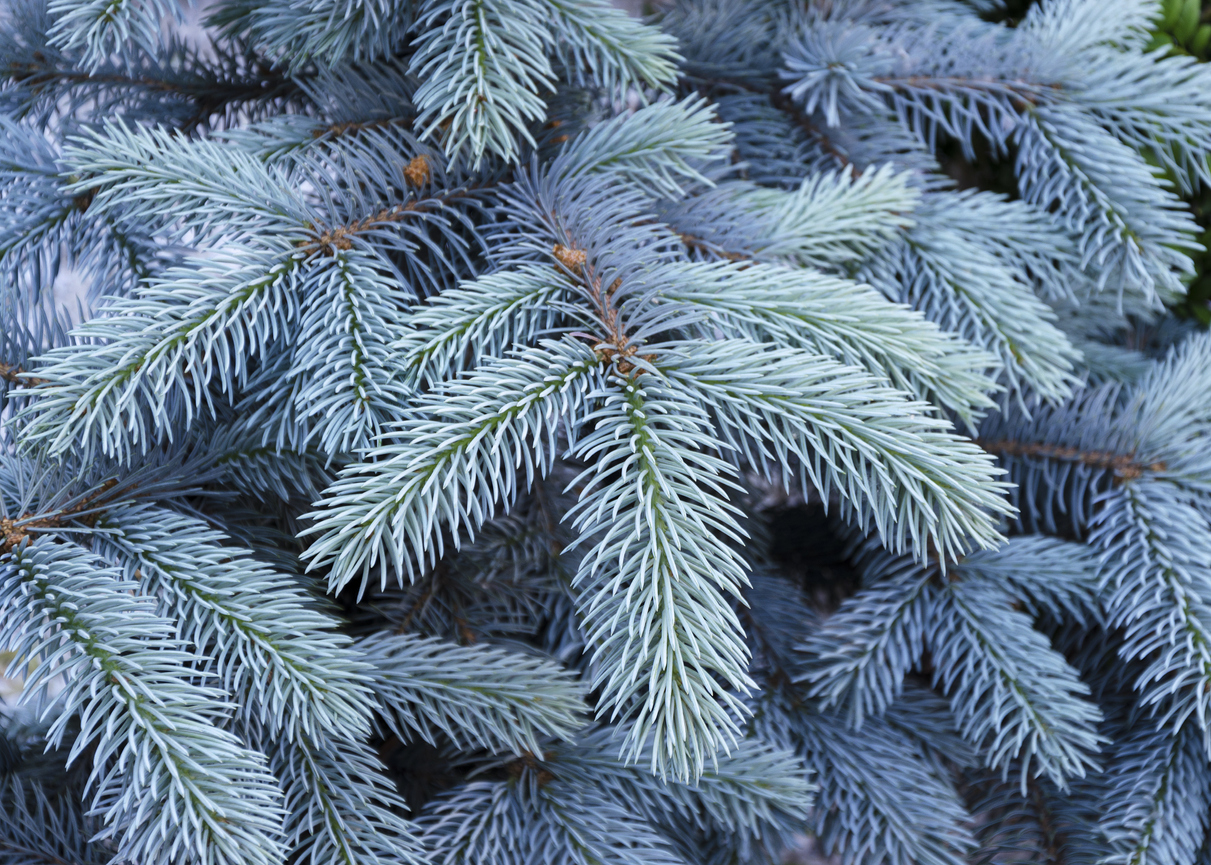
Adding year-round interest, the coniferous evergreen Colorado blue spruce belongs to the pine tree family. Its silvery blue foliage forms a pyramidal shape reaching up to 75 feet tall, producing a pleasantly classic “Christmassy” aroma as well as pine cones. Native to the Western U.S., this evergreen does best at higher elevations in zones 3 through 7.
The spruce prefers full sun and tolerates most soils. This medium- to slow-grower is a low-maintenance tree for the front yard, but it needs room to spread. Whether planted in rows as a windbreak or singly as a specimen, Colorado blue spruce is a stunning tree that attracts birds.
Best For: Spacious front yards.
5. Emerald Green Arborvitae (Thuja occidentalis)
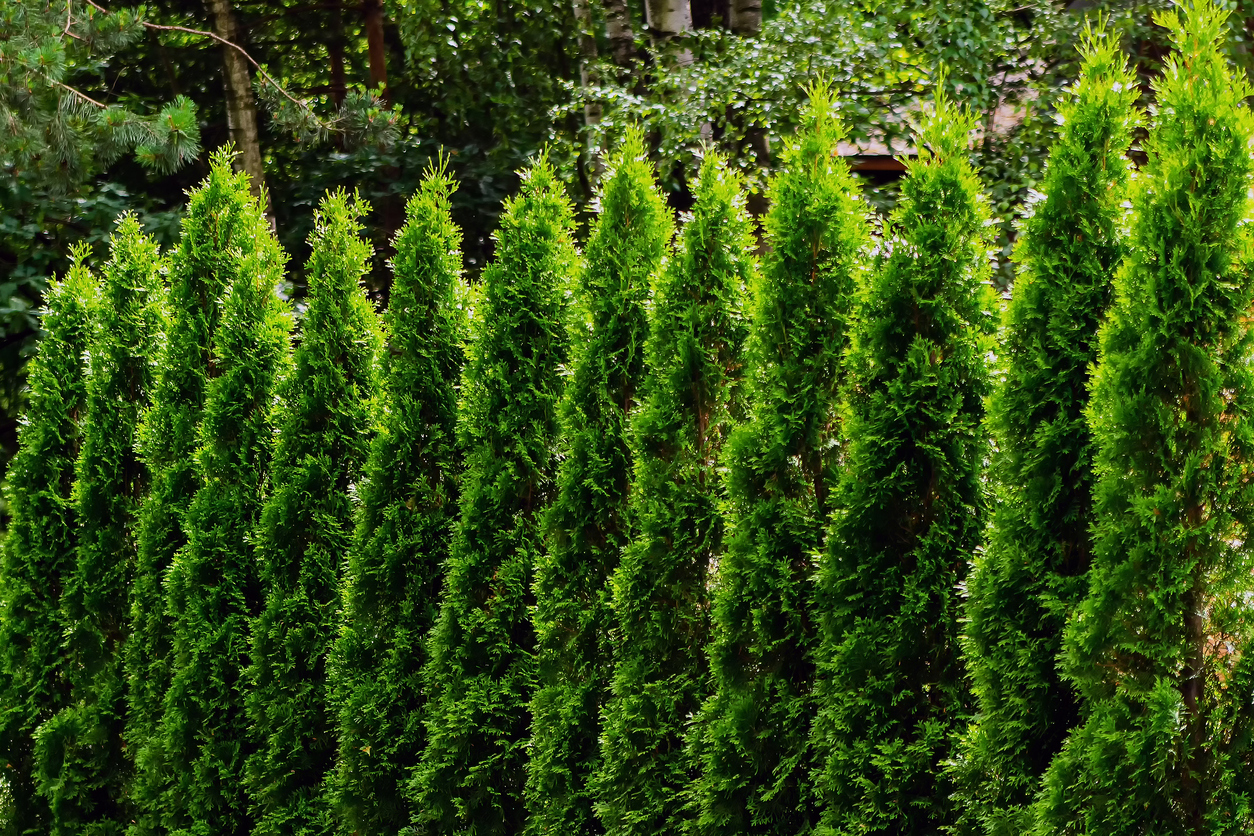
A fast-growing evergreen tree for the front yard, emerald green arborvitae quickly forms a privacy hedge and is often used along property borders in zones 5 through 9. Stretching 15 to 20 feet high, the arborvitae exhibits a narrow, columnar, almost architectural shape. Featuring flat sprays of soft green needles and urn-shaped cones, arborvitae add interest to the landscape.
These evergreens are exceptionally hardy and tolerate most soils. Companion plants that can go near or around them include daylilies, roses, and several types of shrubs. They are easy to maintain but toxic to people and animals.
Best For: Planting in rows along a street or property for a tall, natural privacy screen.
6. Magnolia (Magnolia dodecapetala)
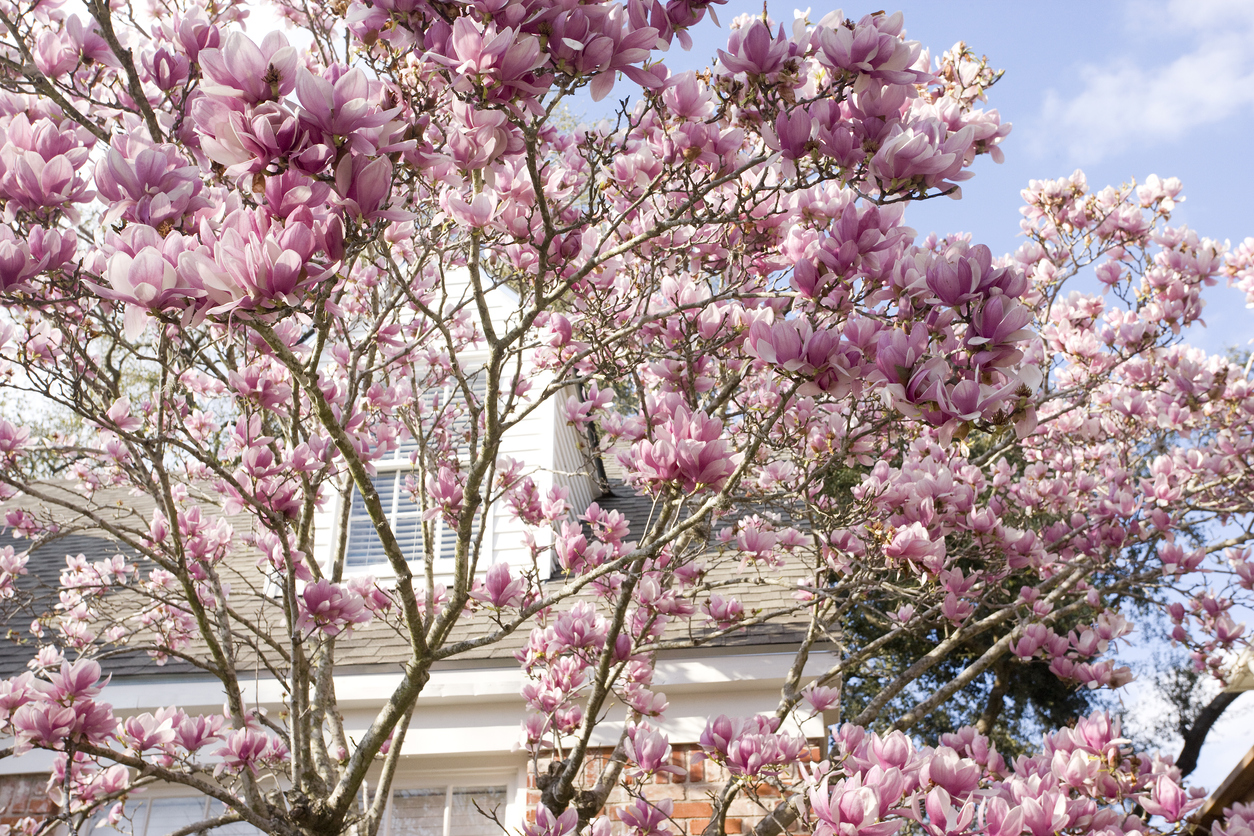
With its large, fragrant pink, white, or lavender goblet-shaped flowers in early spring, the magnolia is an excellent flowering tree for the front yard. Hardy in zones 4 through 9, this little beauty prefers moist, well-draining acidic soil and full sun, although it is best to avoid a southern exposure, which can cause the tree to bloom too early. Exposed areas should also be avoided, because frost can turn petals brown. A low-branching tree, magnolias grow to 10 to 30 feet high, depending on the variety. Despite its smaller stature, the magnolia is a true specimen, putting on a show and littering the ground with the remains of its delicately colored flowers.
Best For: A sheltered but full-sun section of the front yard for optimal blooming displays.
7. Red Oak (Quercus rubra)
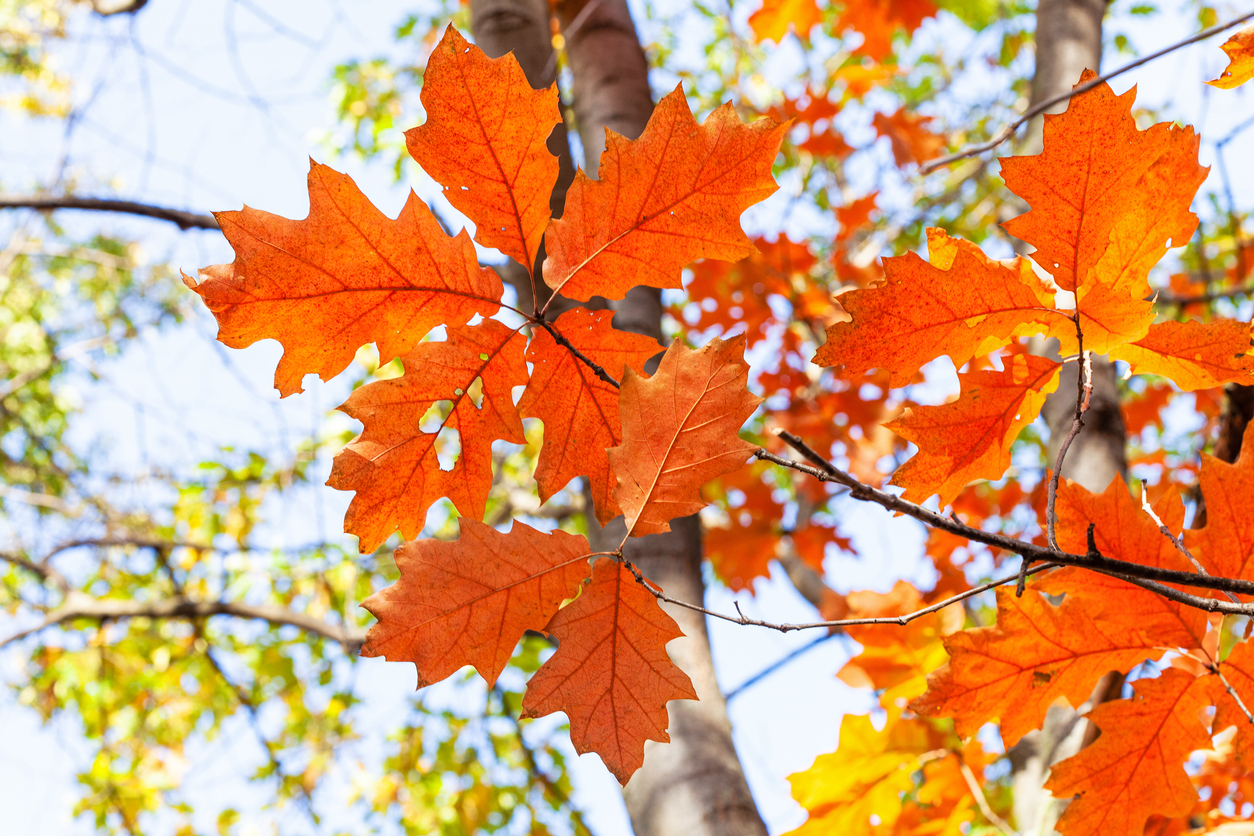
One of the best shade trees for zones 3 to 8, the moderately fast-growing red oak reaches up to 75 feet tall with a rounded canopy and a spread up to 50 feet. It has a deep root system and strong wood. Its hardwood sturdiness makes it safe to plant close to the house, where it will provide plentiful shade. Providing an oak with lots of water during dry spells and a healthy dose of compost will reward you with a healthy tree and a bold display of red fall foliage.
Best For: Larger yards need of shade.
8. Eastern Redbud (Cercis canadensis)
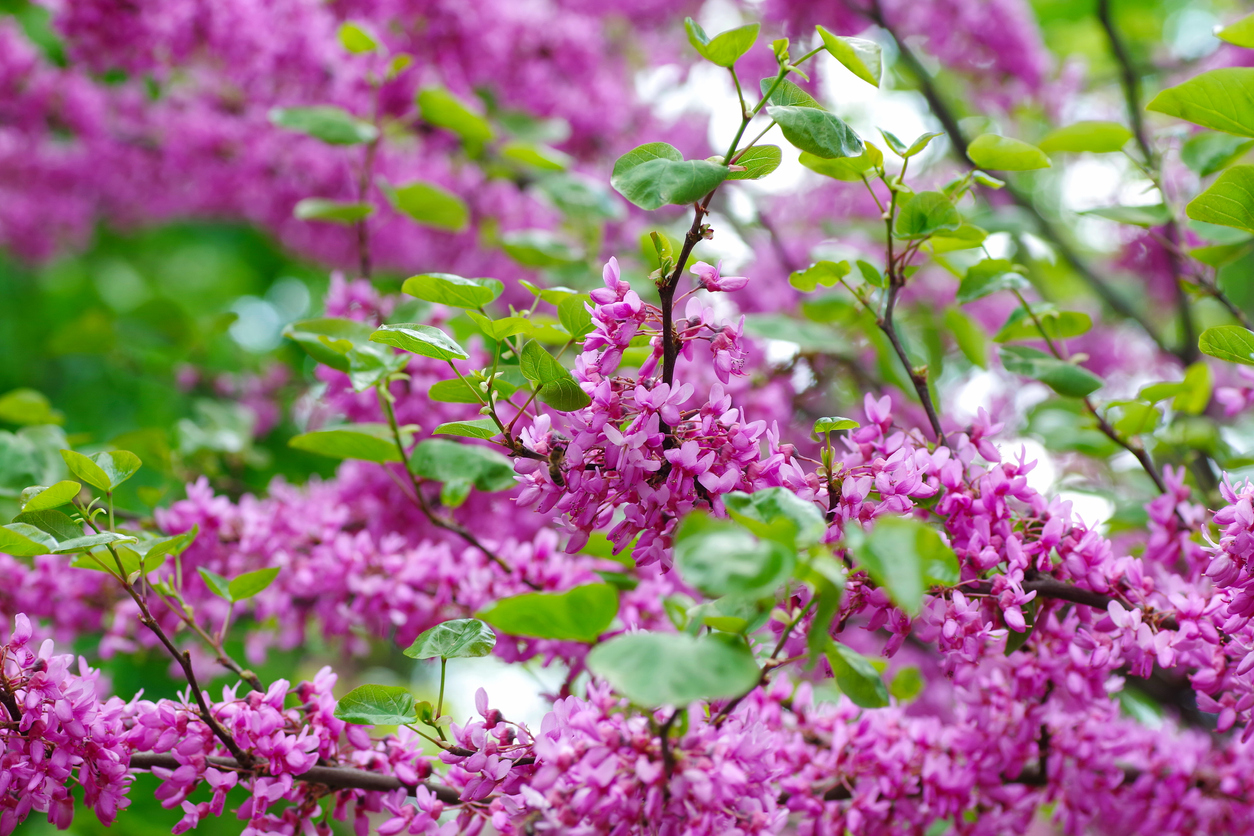
Originating in the eastern part of North America, the eastern redbud is a small deciduous tree that produces tiny pinkish-purple flowers in early spring along its branches before heart-shaped leaves appear. Not growing much more than 20 to 30 feet tall, this medium-size tree for the front yard has a spread almost as wide. The ornamental redbud is hardy in zones 4 through 9, and it isn’t fussy about soil type. It also is drought-tolerant and prefers full sun to partial shade. Multiple trunks grow in a vase shape. Be aware that it has a short lifespan and does not take well to transplanting.
Best For: Front-yard landscaping as a solitary specimen or as part of a small grouping in a naturalized garden.
9. Tulip Tree (Liriodendron tulipifera)
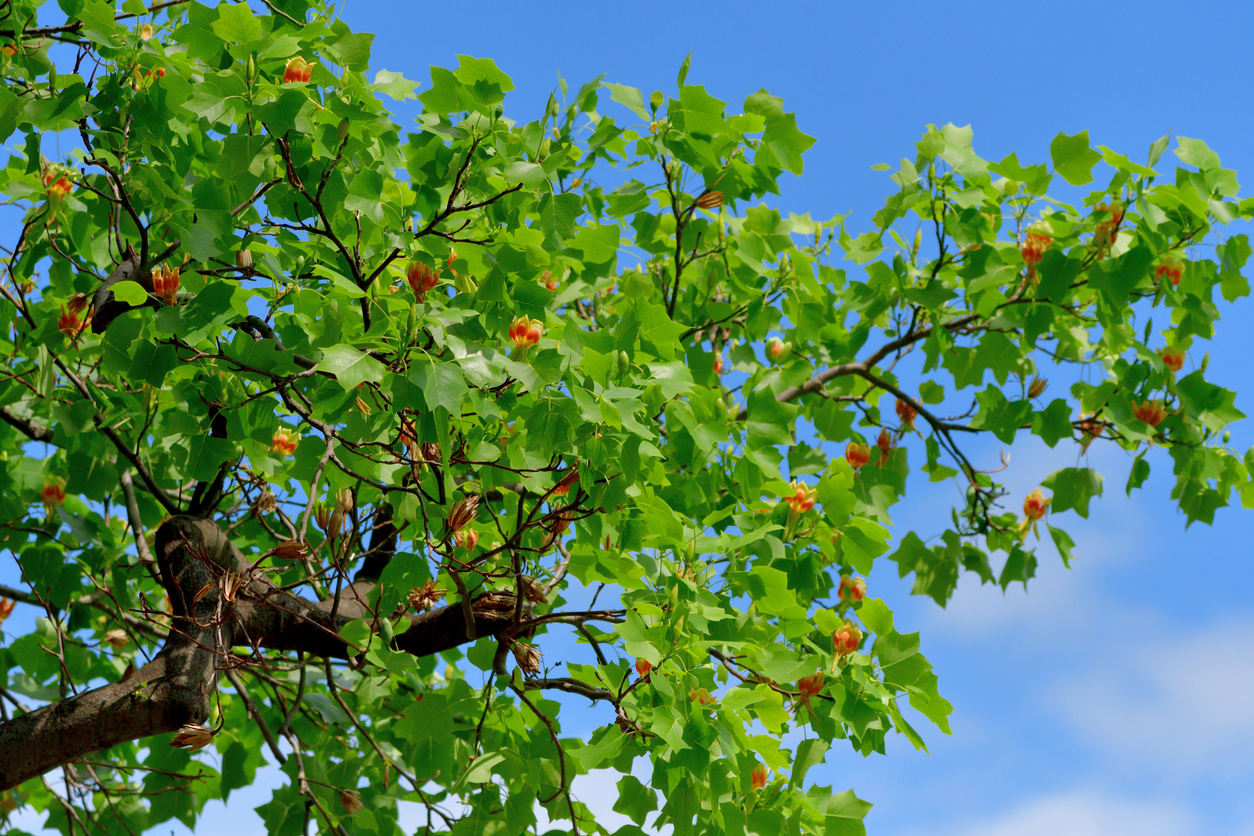
From the eastern and central portions of North America comes a tall, straight hardwood tree that produces in the spring tulip-like flowers of a yellowish-green hue with a touch of orange. Its distinguishing lobed leaves turn a glowing golden yellow in autumn. Growing best in zones 4 to 9, the aptly named tulip tree can reach heights of 70 to 130 feet, with a spread of 30 to 60 feet, but the sunnier the location, the taller and narrower it will grow. This sun lover grows quickly and has few pest issues, yet it attracts pollinators and wildlife.
Best For: Big, open spaces away from buildings.
10. Japanese Maple (Acer palmatum)
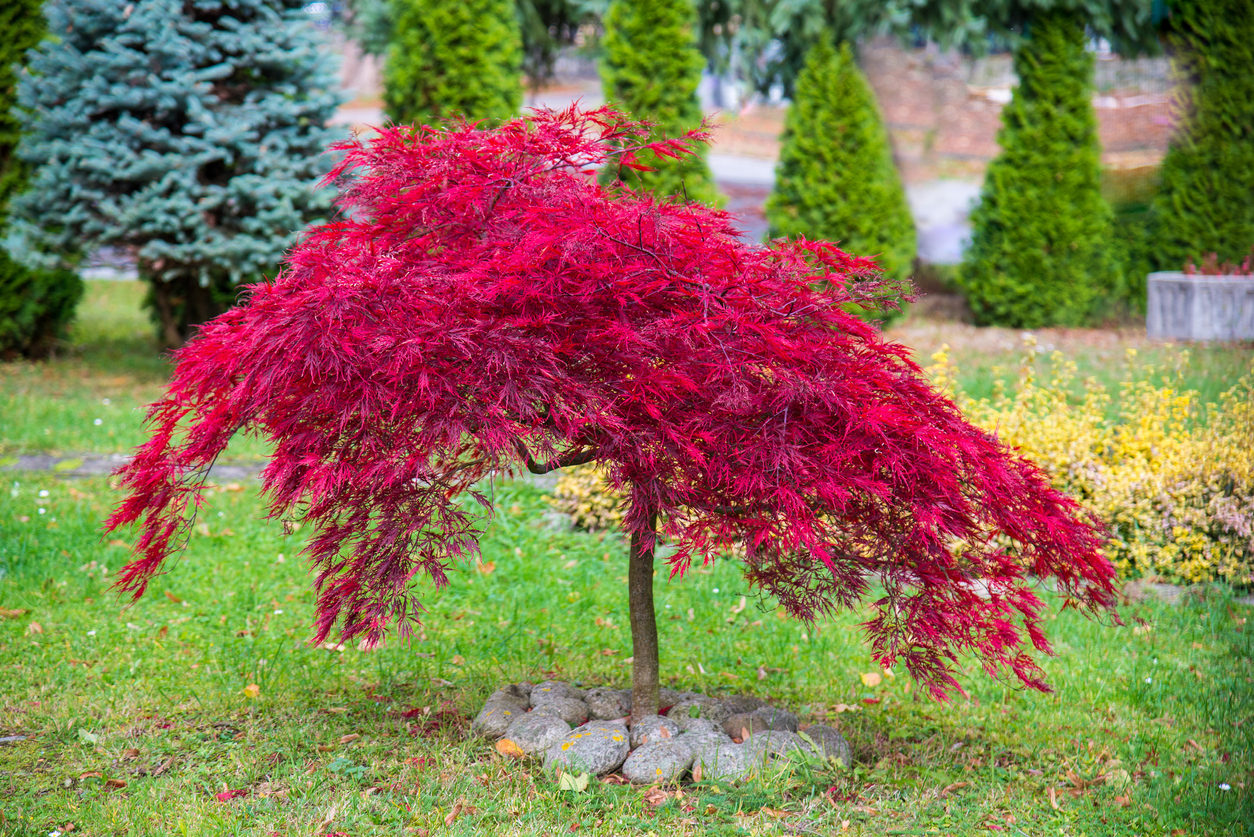
There are many varieties of Japanese maples, from dwarfs that grow only about 8 feet tall to full-size trees that can reach 30 feet high. Either way, this slow-growing specimen tree is quite stunning. The tree’s form can be upright, pendulous, or cascading (which looks particularly lovely near water). Smaller trees make good container plants. Their leaves can be red or green, lacy or traditional. Most prefer partial shade and protection from the wind in zones 5 through 8.
Best For: Growing in containers, beside water features, in rock gardens, or as a front yard focal point.
11. Crape Myrtle (Lagerstroemia indica)
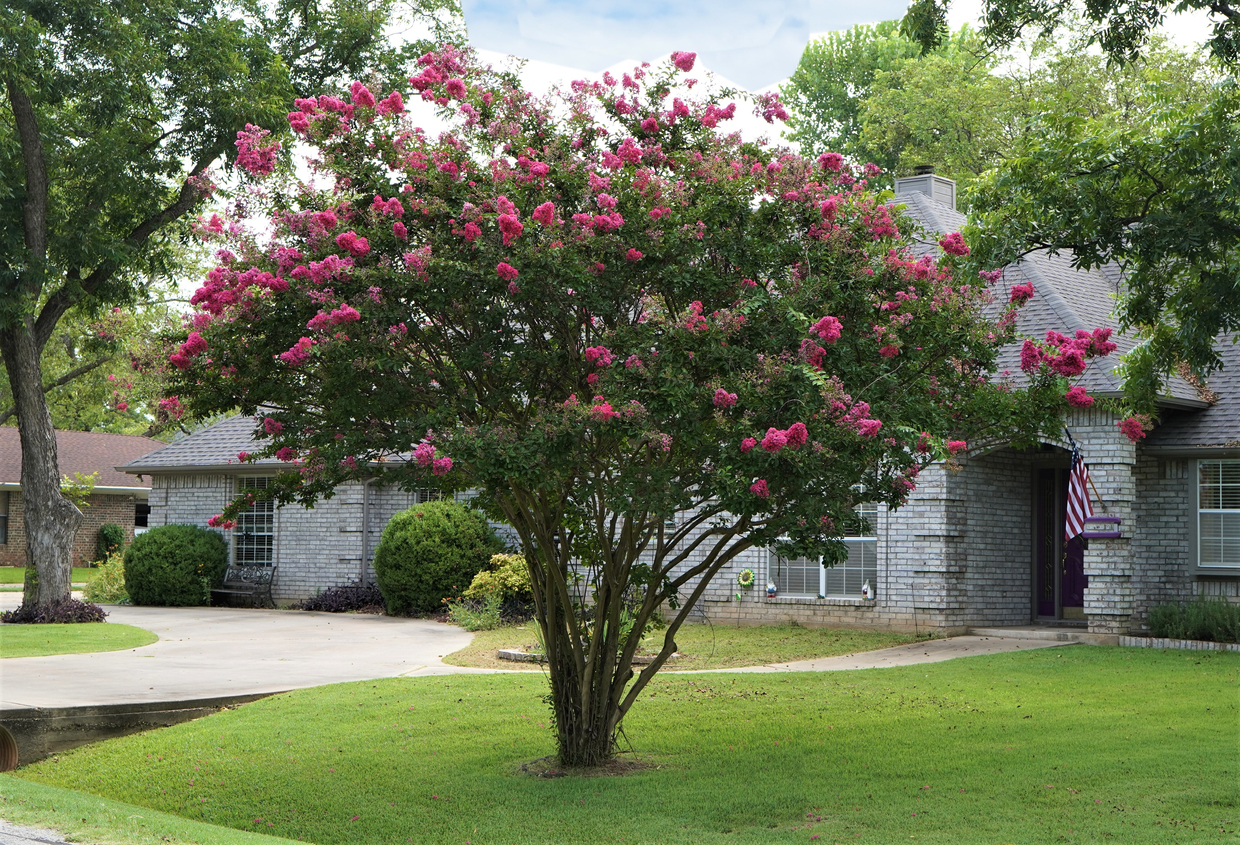
This popular Southern slow-growing star can eventually reach 26 feet tall in zone 6 and above. Drought-tolerant and easy to care for, crape myrtle prefers full sun in a sheltered south- or west-facing spot. The versatile tree is available in single or multi-trunk varieties, and its gray, tan, or cinnamon branches feature peeling bark. But it’s the clusters of paper-like, crinkly flowers in vibrant shades of purple, red, violet, white, or pink that steal the show all summer long, before giving way to radiant red, orange, and yellow leaves in the fall, helping it rank among the most beautiful trees for the front yard.
Best For: Sunny and sheltered locations with enough room for horizontal spread to best show off its beauty.
12. Dwarf Alberta Spruce (Picea glauca)
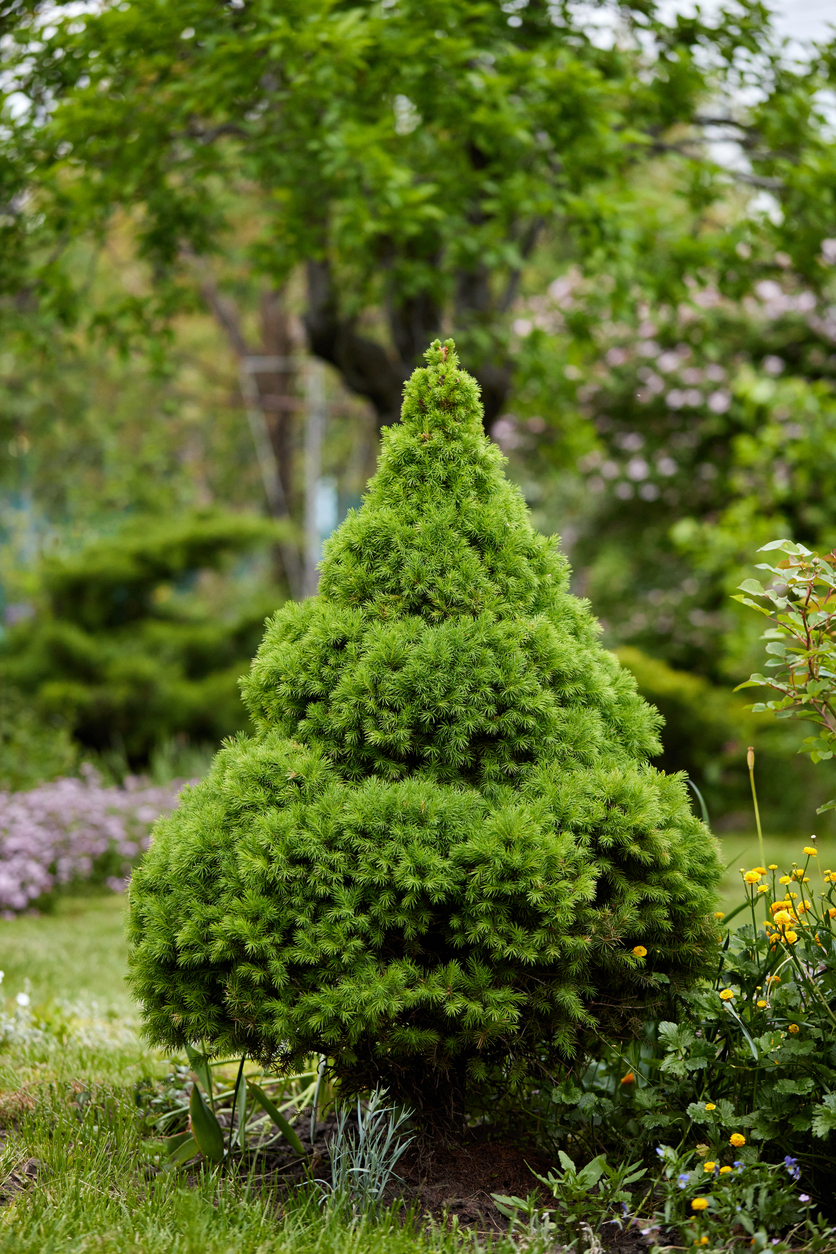
This small, slow-growing conifer with its pyramidal form is one of the best dwarf trees for the front yard. It’s often used as a container plant to imbue the front porch with a formal appearance. It can take dwarf Alberta spruces 30 years to reach their mature height of 12 feet, and they rarely exceed 13 feet. Grown in zones 2 through 6, they are most often used as a specimen or novelty tree in small spaces, where passersby can enjoy their aromatic, soft green needles that are so dense that the trees have a “fuzzy” look. This little spruce can handle cold temperatures, heat and cold, drought, and partial shade, although it prefers full sun.
Best For: Small spaces or containers by the front door.

